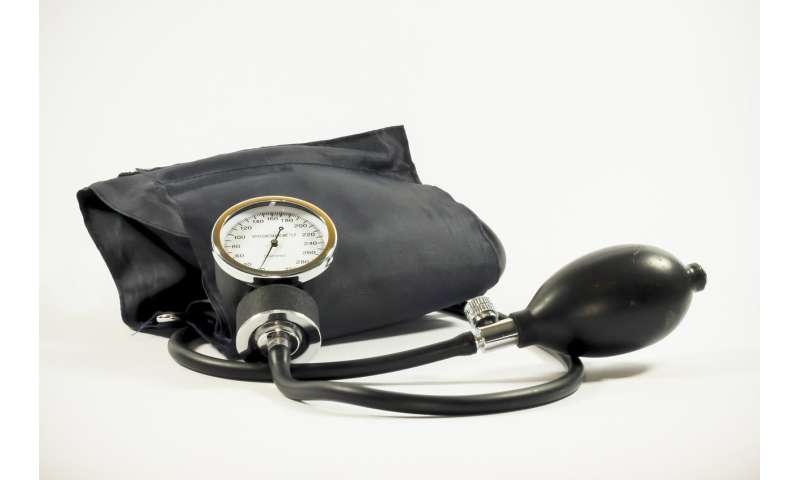Black patients less likely to receive added, higher dose meds to control blood pressure

Nearly one-third of racial disparities in treating high blood pressure may stem from inequities in treatment intensification, according to preliminary research to be presented at the American Heart Association’s Scientific Sessions 2020.
Treatment intensification is critical for optimal blood pressure control and includes either prescribing a new medication in a different class or increasing the dose of an existing medication when a patient’s blood pressure is higher than the goal. In this study, the goal levels were 140 mm Hg for the top number (systolic) and 90 mm Hg for the bottom number (diastolic). According to the current American Heart Association/American College of Cardiology Guideline for the Prevention, Detection, Evaluation, and Management of High Blood Pressure in Adults, hypertension is defined as 130/80 mm Hg or higher.
“Missed opportunities for increasing therapy may be one of the most significant contributors to racial disparities in blood pressure outcomes that may, in turn, contribute to poor health for Black Americans,” said Valy Fontil, M.D., M.A.S., assistant professor of medicine at the University of California San Francisco (UCSF) and first author of the study.
“Achieving blood pressure control in the U.S. still relies on decisions made by clinicians and patients during the clinical encounter,” said Kirsten Bibbins-Domingo, Ph.D., M.D., M.A.S., chair of the department of epidemiology and biostatistics at UCSF and senior author of the study. “More research is necessary to explain why there are such variations in these decisions to intensify therapy.”
Researchers examined data from 2015 to 2017 for more than 15,000 patients treated for hypertension at 12 San Francisco safety-net clinics, which typically provide care to low-income patients. Patients were diagnosed with hypertension and had at least one clinic visit with uncontrolled blood pressure. The average age of patients was 58; 50% were women; and included patients from diverse racial ethnic groups: 29% Asian, 23% Black, 24% Hispanic, and 17% white adults.
The study authors analyzed racial differences in achieving normal blood pressure control and whether those differences could be explained by increasing medication therapy for high blood pressure or patients missing clinic appointments. Missed visits were counted as the number of “no shows” in the four weeks following high blood pressure diagnosis.
The study found:
- Black participants had more missed opportunities for treatment intensification and missed more clinic appointments, compared to other racial groups.
- Lower treatment intensification accounted for 28% and missed clinic visits for 14% of the total effect of Black patients’ blood pressure control, which surprised researchers.
- Additional or intensified treatment for blood pressure control was lower in Black patients and higher in Asian Americans than in the other racial groups.
“Previous studies have shown that Black patients with hypertension are the least likely to achieve normal blood pressure and Asian Americans are the most likely to achieve normal blood pressure, and our results confirmed this. The most surprising finding is that this racial difference appears to be explained by whether patients received additional or intensified therapy for high blood pressure,” said co-author Lucia Pacca, Ph.D., a research associate at UCSF.
“We were completely surprised that Asian Americans’ higher performance in achieving normal blood pressure was almost entirely explained by prescribing behavior,” said Fontil. “Although other investigators have shown that treatment decisions for some conditions such as pain can vary based on the patient’s race and physician bias, this phenomenon has not been widely reported for hypertension treatment. So, we were surprised that doctors were less likely to increase treatment for Black patients, and even more surprised that Asian American patients’ higher likelihood in achieving normal blood pressure was largely related to doctors providing treatment intensification to more patients.”
In addition, the researchers used a statistical model to estimate the likelihood of blood pressure control (lower than 140/90 mm Hg) to compare Black and white patients with hypertension. After accounting for gender, age, first recorded blood pressure during the two years of the study, clinic visit frequency and diabetes diagnosis, Black patients remained 15% less likely than whites to achieve blood pressure control.
Source: Read Full Article
